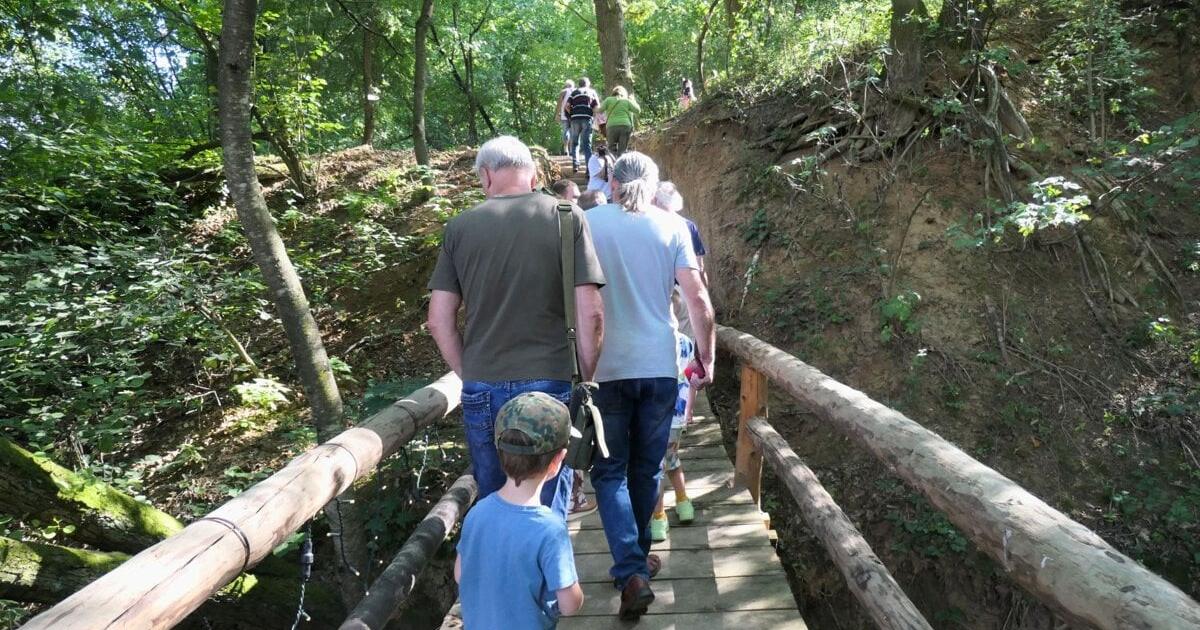Once known primarily to scholars and history enthusiasts, the Chrástky archaeological site is now being introduced to a wider public thanks to a newly opened educational trail that leads visitors to a place where people lived thousands of years ago, leaving behind valuable traces of ancient civilisations.
The new attraction is located in the village of Veľké Hoste, located in the Bánovce nad Bebravou District in western Slovakia.
Trail built by the community
The so-called Mohylník trail runs through an archaeological area that includes burial grounds from various periods, ranging from the Lusatian culture (1300-500 BC) to the era of Great Moravia (circa 833-907). The trail was built entirely through local volunteer effort.
The path is undemanding and suitable even for children. The overgrown site has been cleared, and information boards have been installed along the route, along with a symbolic statue of Saint Gorazd.
The site is noteworthy not only for its archaeological significance, but also for a wartime event—an American aircraft crashed here during the World War II.
A dominant feature of the trail is the statue of Saint Gorazd, the first Slovak saint and successor of Methodius, a Byzantine Christian missionary who together with his brother Cyril came to Great Moravia. The wooden figure was carved by local craftsman Ľubomír Bjelko and now stands opposite the largest burial mound, believed by experts to date back to approximately 1200 BCE.
Settled for four millennia
According to the information panels, the site has been inhabited for more than 4,000 years. In the 1950s, local native Jozef Porubský of the Slovak Academy of Sciences’ Archaeological Institute conducted a major excavation of the area. The research confirmed the presence of multiple settlement layers.
Archaeologists uncovered 80 graves associated with the Lusatian culture. This group is known for its unique burial practices, in which the deceased were cremated and their remains buried in pits, often accompanied by ceramics and personal items. While these were not lavish burial grounds, they provide valuable insights into the community’s daily life, social customs, and beliefs in the afterlife.
Slavic burial ground reveals rare finds
The most striking discovery is the extensive Slavic burial ground. The mohylník, or burial mound field, consists of over 150 graves that shed light on the funeral practices of Slavs during the era of Great Moravia.
The mounds—modest earthen elevations built over graves—contain mainly burials in varying orientations, which, according to historians, suggests that the local population had not yet fully adopted Christianity.
Graves have yielded bronze and metal jewellery, glass and amber beads, as well as weapons and everyday tools. Swords and axes found in the more elaborate graves may have belonged to warriors or other prominent community members.
One grave even contained a stirrup, possibly indicating the presence of a rider—likely a local noble. “Historians believe that a garrison once stationed here protected a branch of the Amber Road leading from Nitra to the Považie region,” explains Jozef Korál, deputy mayor of Veľké Hoste. “This protective role may also be reflected in the site’s name, which likely derives from the Slavic word chrániť—to protect,” he adds.
Spectacular Slovakia travel guides
